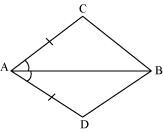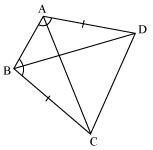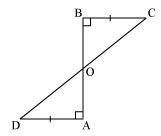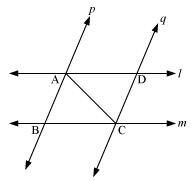In quadrilateral ACBD, AC = AD and AB bisects ∠A (See the given figure). Show that ΔABC ≅ ΔABD. What can you say about BC and BD?

In ΔABC and ΔABD,
AC = AD (Given)
∠CAB = ∠DAB (AB bisects ∠A)
AB = AB (Common)
∴ ΔABC ≅ ΔABD (By SAS congruence rule)
∴ BC = BD (By CPCT)
Therefore, BC and BD are of equal lengths.








